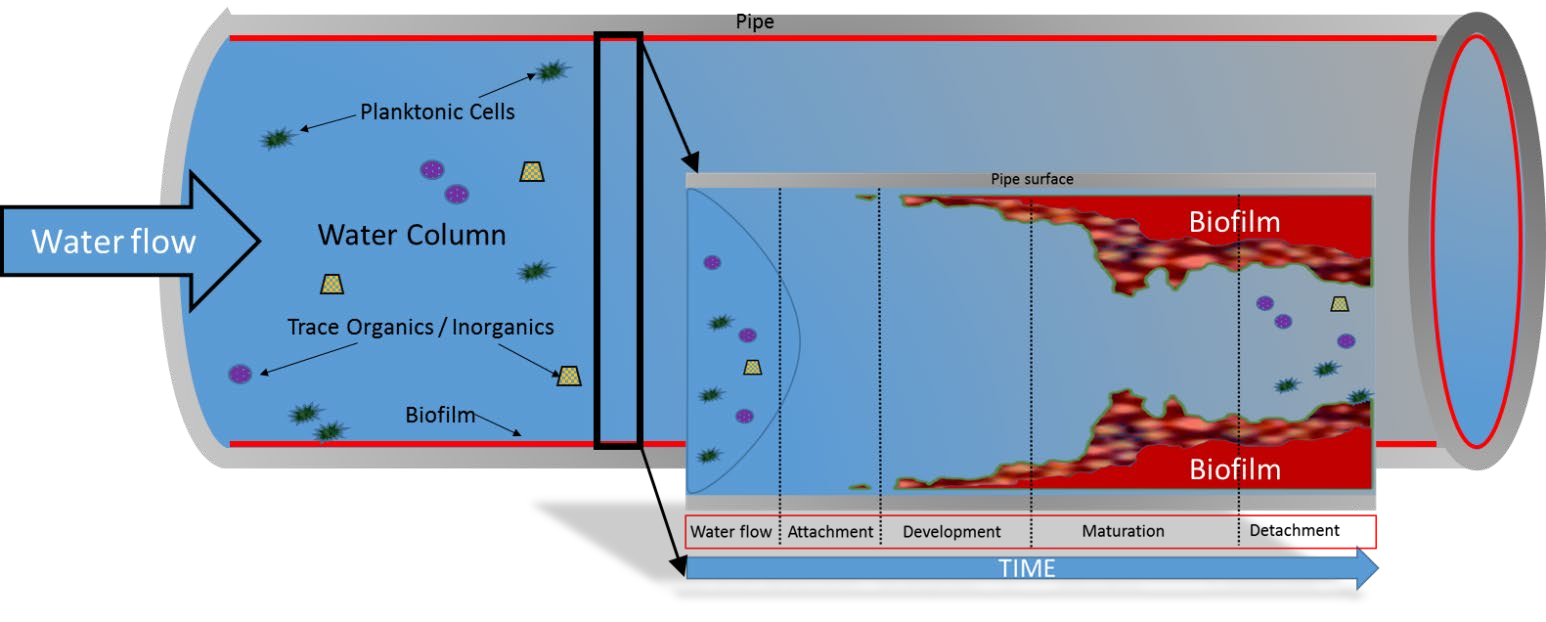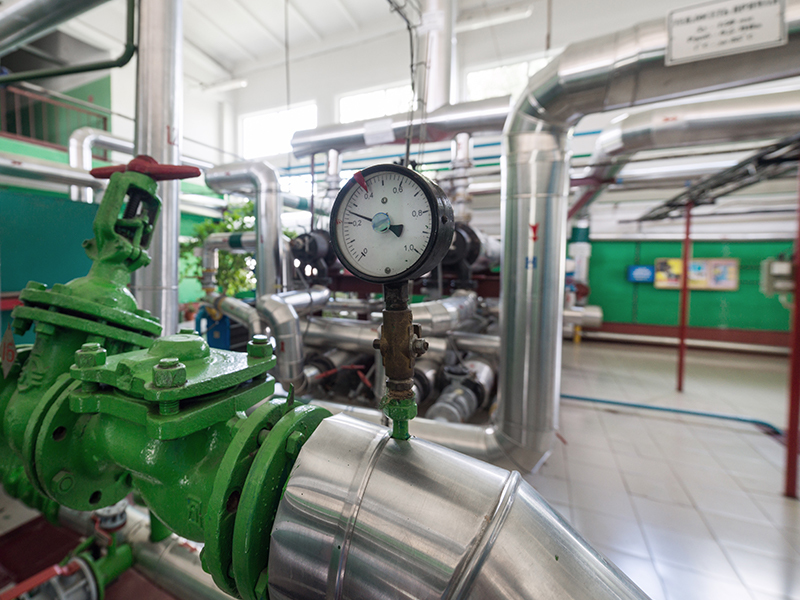The Federal and State mandated business closures and travel restrictions, due to the COVID-19 virus, have caused many businesses to reduce water flow in various complex building water systems. While the COVID-19 virus is not associated with building water systems, there are other pathogens and water quality issues that can potentially develop due to stagnant or reduced water flow in buildings.
There may be instances when a building water system needs to be shut down or placed in an isolation condition, including temporary closures of the building, building renovations or isolation of a section of a larger distribution system. A water system that is in a low flow condition is slightly different but presents a similar potential for the development of biofilm and the amplification of potentially harmful bacteria.
Under normal building operation, chlorinated or chloraminated water is supplied to a building from the local municipality and the disinfectant is evenly distributed throughout the building water distribution system. However, loss of disinfectant residuals may occur due to a number of factors, including disinfectant demand, temperature, nutrient loading, and water flow. In situations described above, if the water flow stops or is significantly reduced, bacterial growth and biofilm development can increase rapidly as the disinfectant in the water is depleted. The following is an exaggerated graphic of the development process:
 |
|
cross section of potable water piping |
In cases where a building’s water flow has been reduced (but not valved off) it is important to develop a protocol or management plan for consistently flushing as many of the distal (away from the main header) faucets, fixtures and outlets as possible. Each of the water lines off the supply main has the potential for concentrating bacteria and biofilm. Flushing these lines will help exchange the stagnated water with fresh water containing a disinfectant.
For building water systems that have been completely isolated for an extended period, a potable water disinfection (using chlorine) will be the process for any new or older piping. This will be part of the commissioning protocol and is typically mandated by the local health department prior to occupancy or human consumption. In this condition a total coliform test (positive/negative) is performed and must be tested within 24 hours of sampling. Check with the local health department for specific guidelines.
Steps to be Considered
The following are some simple actions that should be considered while a building is under low-flow conditions:
- Flow and exchange 3 – 7% of the water based on estimated total water volume for the building.
- Flow water at each distal outlet until there is a chlorine residual (free or total) based on the type of disinfectant. This will require a free or total chlorine test kit. Additionally, a specific test for monochloramine can be used for chloraminated systems.
- For hot water potable systems, flush the water to the point where either the water temperature is the same as the hot water main or above 120 F (where allowed). This will require a thermometer.
Once the building water system is scheduled to return to normal service, flushing should be increased, and additional testing is advised.
- Disinfectant levels should be at or near the supplied water levels at all locations in the building.
- Samples for total heterotrophic plate count should be collected and cultured. Total heterotrophic plate counts should be less than 500 colony forming units. Local certified water testing laboratories will be able to perform these cultures and the interpretation of the results.
One of the most effective means of reducing bacteria amplification and biofilm development is simply exchanging the old water with new. Waterborne pathogens can concentrate in stagnant water if the building distribution system is not flushing regularly. It is important to develop and follow a written plan for both low flow and idle water systems. Documenting the process and procedures followed will help if a shutdown is required in the future.
Further details, including proactive steps to minimize water stagnation during building closures and actions items to address water quality prior to reopening, can be collected from a recently published document from the U.S. EPA on restoring water quality in buildings.
For more information on how to address your water treatment issues, contact us to learn more from one of our water treatment experts.

